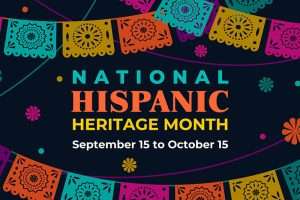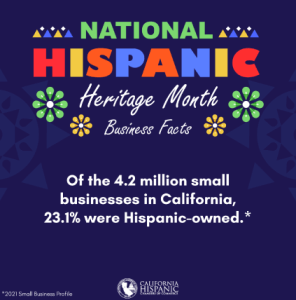 Latinos in the United States are an economic powerhouse, contributing $2.8 trillion in gross domestic product (GDP) each year. In fact, if U.S. Latinos were a standalone country, they would rank as the fifth largest GDP in the world, larger than India, Russia, Canada, England and other major economies, according to a report by the Latino Donor Collaborative in partnership with Wells Fargo.
Latinos in the United States are an economic powerhouse, contributing $2.8 trillion in gross domestic product (GDP) each year. In fact, if U.S. Latinos were a standalone country, they would rank as the fifth largest GDP in the world, larger than India, Russia, Canada, England and other major economies, according to a report by the Latino Donor Collaborative in partnership with Wells Fargo.
With a quarter of Latino Americans in the United States residing in California alone, Governor Gavin Newsom last month proclaimed September 15 to October 15 as Latino Heritage Month in California. The contributions of the Latino community have officially been celebrated in the U.S. since 1988, when then-President Ronald Reagan signed National Hispanic Heritage Month into law.
Latino-Owned Businesses
Latino business owners represent an important segment of the economy, generating $460 billion in U.S. revenue and $100 billion in California revenue.
These business owners are also powerful job creators, employing 2.9 million of the nation’s workers, according to the 2021 State of Latino Entrepreneurship report by the Stanford Latino Entrepreneurship Initiative (SLEI).
Despite making up only 18.6% of the U.S. population, Latinos have been responsible for 73% of the growth of the U.S. labor force since 2010. From 2010 to 2020, Latinos added workers to the U.S. labor force at a rate nearly 15 times that of non-Latinos, the Latino Donor Collaborative reported.
In California, there are more than 70,000 Hispanic-owned, employer businesses located across the state, and the number of these enterprises continues to grow. According to the California Hispanic Chambers of Commerce (CAHCC), Hispanics are starting businesses at a faster rate than the national average, growing 34% over the last 10 years compared to just 1% for all other small businesses. In the decade preceding the pandemic, the number of Latino business owners increased 43.9% in California, compared to an increase of just 5% among non-Hispanic business owners.
Latino business owners also are more likely to be building businesses for the long term — they are twice as likely to report their primary goal as an entrepreneur is to operate a business that can be inherited by their family, the Stanford University study found.
Latino Demographics in California
 Today, approximately 15.6 million Californians trace their roots to origins across the Americas, Indigenous communities of Latin America and Africa, and beyond, with 77% of residents claiming heritage from Mexico alone.
Today, approximately 15.6 million Californians trace their roots to origins across the Americas, Indigenous communities of Latin America and Africa, and beyond, with 77% of residents claiming heritage from Mexico alone.
Hispanic Californians are the largest racial or ethnic group in the state, making up 39.4% of the state population in the 2020 census, compared to 34.7% for non-Hispanic whites, 15.1% for Asian Americans, 5.4% for African Americans, and 0.4% for Native Americans, according to the Public Policy Institute of California. The Hispanic population has increased 11% since the last census, outpacing the 6% increase for the state as a whole. However, this marks a slowdown in growth from previous decades as both Hispanic immigration from abroad and Hispanic birth rates have declined.
Due to the decline in immigration, California’s Hispanic residents are increasingly born in the U.S. or naturalized citizens. Two-thirds of Hispanic Californians are native born and 41% of the rest are citizens, for an overall citizenship rate of 81%.
Thank you to the CAHCC for their contributions to this article.




